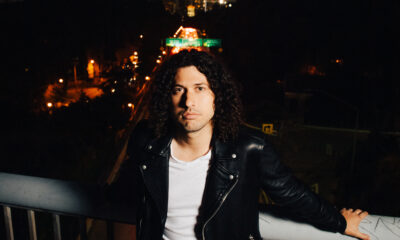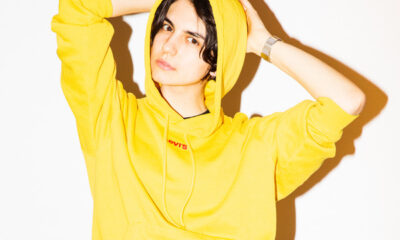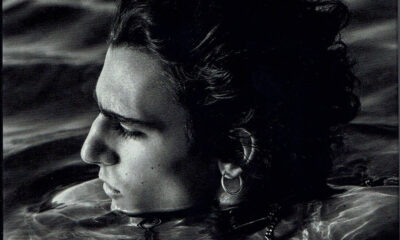Entertainment
Concert Review: Dead & Co. Brings a Younger Vibe to Deadhead Culture in Atlanta
A look into an aging world.
Sometime around 8:30, the music stopped.
The house lights turned back on, and John Mayer, Bob Weir, Mickey Hart, Bill Kreutzmann (along with bassist Oteil Burbridge and keyboardist Jeff Chimenti) left the stage. My three friends and I looked at each other in disbelief: after an only somewhat satisfying hour and a half, there was no way that Dead and Company could be finished playing.
“Y’all want to hear a joke,” a scraggly young couple, one shirtless and one with dreadlocks, asked us. They approached almost out of nowhere, like they’d assimilated from the massive crowd. We sheepishly nodded our heads. We already looked totally out of place as overdressed college students (one of my friends even wore her David Yurman bracelets) amidst a sea of band t-shirts, Tevas and dreadlocks.
And since we’d all forgotten our fake ID’s, we were sober and un-stoned amongst the thousands of Deadheads surrounding the premises of Lakewood Amphitheater in Atlanta, Ga.
“What’s the difference between a prostitute and a crack dealer,” the boyfriend asked us, his girlfriend giggling wildly beside him while smoking a cigarette. I didn’t hear the punchline, because I’d become distracted by a middle aged dad dancing by himself in one of the aisles nearby. I wondered if he’d even realized that the band had stopped playing, leaving the stage after only getting through about six songs.
I turned my attention back to the couple, at the sound of my friends nervously laughing at the joke I’d missed out on. As the couple walked away happily, cigarettes blazing trails of smoke behind them, I realized that a three-legged dog followed obediently behind them on a leash.

Stealing your face in Atlanta (Image: Zooma/Flickr)
They were just one of the many stereotypes that you might run into at a Dead and Company show.
On top of the drug freaks, there are the middle aged couples who probably attended the O.G. Grateful Dead shows together, the wife in tie-dye with the husband in a Steal Your Face t-shirt. The college girls clamoring onto the free-spirit trend, each one in Etsy flower crowns, who in all honestly are really just there to see John Mayer and to post pictures to Instagram.
The drunk frat guys making the fraternity pilgrimage to a show where all manner of substances are completely acceptable. There are even parents passing along the tradition to toddlers. Eating brunch in Midtown Atlanta before driving to Lakewood, we saw a couple holding the hands of two little girls in Grateful Dead t-shirts.
It was starting to get dangerously close to 8:45, and there was still no sign of the band coming back onstage.
“Well,” my friend said, checking his phone for the time. “You and I might be able to say that we were at the exact show where Bob Weir died backstage during intermission. Or maybe they’re just taking bong rips.”
Either options were starting to sound extremely probable. I was just more worried about how the second set would be able to make up for what I’d just witnessed; while the band was spot on and the music was rad, it was difficult to concentrate with the crowd around us acting as though the group hadn’t even taken the stage. Opening with “Iko Iko” was a huge deal for most, who cheered and screamed for the beloved Dead classic. Throw in “I Need a Miracle,” “Brown Eyed Women,” and “Alabama Getaway,” and it made up an incredibly solid set list, a good mix for any serious fan.
Let me just emphasize here that it wasn’t the music that was disappointing; it was the lack of enthusiasm I was seeing around me. If you’ve ever watched Bob Weir’s Netflix documentary, The Other One, there’s a scene in which he describes the troves of people who come out to Grateful Dead shows every year. Some of which, he acknowledges, are only there to party. It’s sad to watch him admit such a thing, but it’s the complete truth even to this day. And sure enough in our seating section, in the midst of an amazing one-of-a-kind setlist, the couple sitting next to us were busy rolling up a blunt for the latter part of the show, and a woman sitting in front of us had engaged two of my friends in conversation. Someone I knew who had a lawn ticket texted me; “Can you believe they’re playing ‘Saint of Circumstance’? I didn’t see that coming.” I couldn’t even hear over the talking around me, let alone tell what song was being played. I craned my neck to peer around the majority of the section and it seemed like everyone was either rushing outside of the amphitheater to grab a beer, speaking too loudly on their phone, or talking in depth to someone sitting close to them. But things finally started to make sense during the solo of “Saint of Circumstance,” as the crowd around us began to hush and people started grooving. And I do mean actual, literal grooving. College girls and men my father’s age alike twirled around the aisles. One particular guy in front of us kept removing the bandana around his forehead, to use it as a flag to accentuate his dancing as he wildly moved his arms in the air. At one point he turned around, fist bumped each of us, and said, “John’s really tearing up that guitar, huh, man?”
You really can’t make this shit up; every possible stereotype I’ve ever imagined of Deadheads were coming to life, right before my eyes. They all seemed to be here either for the tour merch or the tallboys, or maybe even just the memory of being within the same vicinity of Jerry Garcia at a Dead show, now replaced by a younger, smoother, more pop-oriented model. But none of them seemed too into it at this point in the show. It felt like witnessing the opening act at a concert where everyone only cares about the headliner, not even giving the first group a chance.
But just as it finally started to grow darker out, around 9 or so, the house lights turned off and the band took the stage again. This time, it was clear that all eyes were open and watching. People shut up and immediately turned their entire bodies towards the stage, taking large gulps of beer to prepare for what was to come. The second set started off with “Here Comes Sunshine,” and as John Mayer and Bob Weir harmonized, bright yellow stage lights bathed the crowd in artificial sunlight. Literal magic. “Eyes of the World” was next, and I was especially glad that one of my personal favorites made it onto the setlist. Speaking of setlists, every song throughout the duration of this show was a complete and welcome surprise. The band’s Instagram page posts pictures of each show’s setlist after every concert, and every single show is a total surprise. On “Eyes of the World,” Bob Weir’s lead vocals were refreshing to hear, because let’s face it, it is sort of strange hearing John Mayer’s velvety voice in the place where we should be hearing Jerry Garcia’s. But despite naysayers and Grateful Dead purists, Mayer is a great and brilliant addition to the lineup. Anyone familiar with his past work knows that he can hold his own in terms of blues guitar, but hearing it morph with the psychedelia and folk of the Grateful Dead’s music works incredibly well.
When “Eyes of the World” blended seamlessly into “Althea,” I can personally say that I lost my mind. Hearing your favorite Grateful Dead song in concert is one thing, but to have the people around you dancing with you, singing along with you, talking with you, laughing with you is the essential feeling of unity that people search for in every concert. “Scarlet Begonias” became “Fire on the Mountain,” and then suddenly the ambience of “Drums/Space” set in. “Drums/Space,” for all of the civilians reading this, is a staple at every Dead show. It’s the Grateful Dead’s answer to Led Zeppelin’s “Moby Dick,” but instead of just being a display of a drummer’s raw power, “Drums/Space” serves to accentuate the fact that there are two drummers in the group (Mickey Hart and Bill Kreutzmann) who can play perfectly in sync and still manage to be incredibly unique musicians. It’s spacey and somehow eloquent all in itself. They wrapped up the show with a melodic performance of “Morning Dew,” and then came back for an encore of “Johnny B. Goode.”
We stood outside of the venue for a few minutes after the show ended before making the trek back to my friend’s truck, people-watching and talking about the show; we were all still buzzing. Beside us, an older woman was hugging her husband, thanking him for the tickets and remembering an early-80s Dead show when Jerry was still alive. A group of people closing down the craft beer kiosk were loudly laughing and singing the words to “Fire on the Mountain.” A drunk girl stumbled alongside her boyfriend, who held her upright as she giggled endlessly about the show. Things were winding down and the people themselves were winding down. It felt incredibly peaceful.
When we made it back to the truck, we were met with an insane line of traffic snaking around the Lakewood parking lot. My friend’s frustration caused him to cut in front of another driver, jolting the truck forward to assert a place in line. We all looked back at the person that we’d cut off, expecting a middle finger or a window rolled down, followed by some explicit words. Instead, he held up a peace sign and smiled, waving us on.
And really, that’s what the night was all about.
To watch Set 1 of the show, click here: https://www.youtube.com/watch?v=JrYikqDPUO8
To watch Set 2 of the show, click here: https://www.youtube.com/watch?v=RTA2rpcvtno
If you obsess over singers and bands, and are one of those people who make a playlist for every occasion, join CMN’s Music Journalism Course and get real-time experience, intense feedback on your writing, exposure to music industry insiders, and a great place to display build your portfolio. Get all the details on the Music Journalism Course here.











